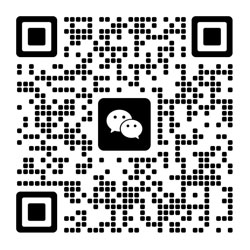Roller bearings and ball bearings
In the modern industrial field, the efficient operation of mechanical devices can not be separated from the support of a variety of key components, and rolling bearings as an important part of them, plays a vital role. As two common types of bearings, roller bearings and ball bearings have significant differences in their structure, working principle and advantages and disadvantages. We will take you together to compare the characteristics and analyze the advantages and disadvantages of roller bearings and ball bearings to help readers better understand their applicability in different applications.
Roller bearings: structure and working principle
Roller bearing is a kind of mechanical part that utilizes cylindrical rollers to roll between the inner and outer periphery of the bearing to support and reduce rotational friction. Its main structure includes inner ring, outer ring, rollers, cage and other parts. Roller bearings have good load carrying capacity under high loads and shock loads through the rolling motion of the rollers. Due to the relatively long length of the rollers, the rolling surface has a larger contact area with the inner and outer rings of the bearing, so it is suitable for high loads and low rotational speeds.
Ball bearings: structure and operating principle
Ball bearings, on the other hand, use spherical rollers to roll between the inner and outer rings, and their main structure includes the inner ring, outer ring, balls, cage and other components. Ball bearings are suitable for high speed operation because of their small rolling friction and high speed. The contact area of ball bearings is relatively small, but because of the round shape of the ball makes its contact pressure concentrated, suitable for high-speed operation under the demand for bearings roller bearings and ball bearings characteristics comparison
1. Load carrying capacity: roller bearings can provide higher load carrying capacity under high load conditions due to the larger length of the rollers, which is suitable for heavy machinery and equipment. Ball bearings are suitable for high-speed shaft rotation due to the small size of the balls, but they are slightly inferior to roller bearings in terms of load-carrying capacity.
2. Speed limitation: Ball bearings are suitable for high-speed rotating equipment because of the round structure of the balls, which has less friction in high-speed operation. Roller bearings, due to the length of the rollers, will increase friction at high speeds and are suitable for low-speed operation.
3. Friction and loss: roller bearings have higher friction due to the large contact area of the rollers, but they can share the load better due to the dispersed contact pressure. Ball bearings have less friction because of the small size of the balls, but are prone to contact fatigue and loss under high loads.
4. Size and mounting: roller bearings have large external dimensions and are suitable for use in situations where the mounting space is relatively large. The external dimensions of ball bearings are relatively small, suitable for scenes with limited space.
Advantages and disadvantages of roller bearings and ball bearings
Advantages of roller bearings:
Large load carrying capacity, suitable for heavy load equipment. Able to disperse contact pressure, which is conducive to load balancing.
Better performance when subjected to shock loads.
Disadvantages of roller bearings:
Friction and heat increase when rotating at high speeds, limiting their use.
Higher lubrication requirements due to large contact area.
Advantages of ball bearings:
Suitable for high speed rotation with low friction.
More suitable when the axial and radial space is small.
Higher precision and smoothness.
Disadvantages of ball bearings: bearing capacity is relatively small compared with roller bearings, suitable for small and medium-sized equipment.
Not as good as roller bearings when subjected to shock loads.

